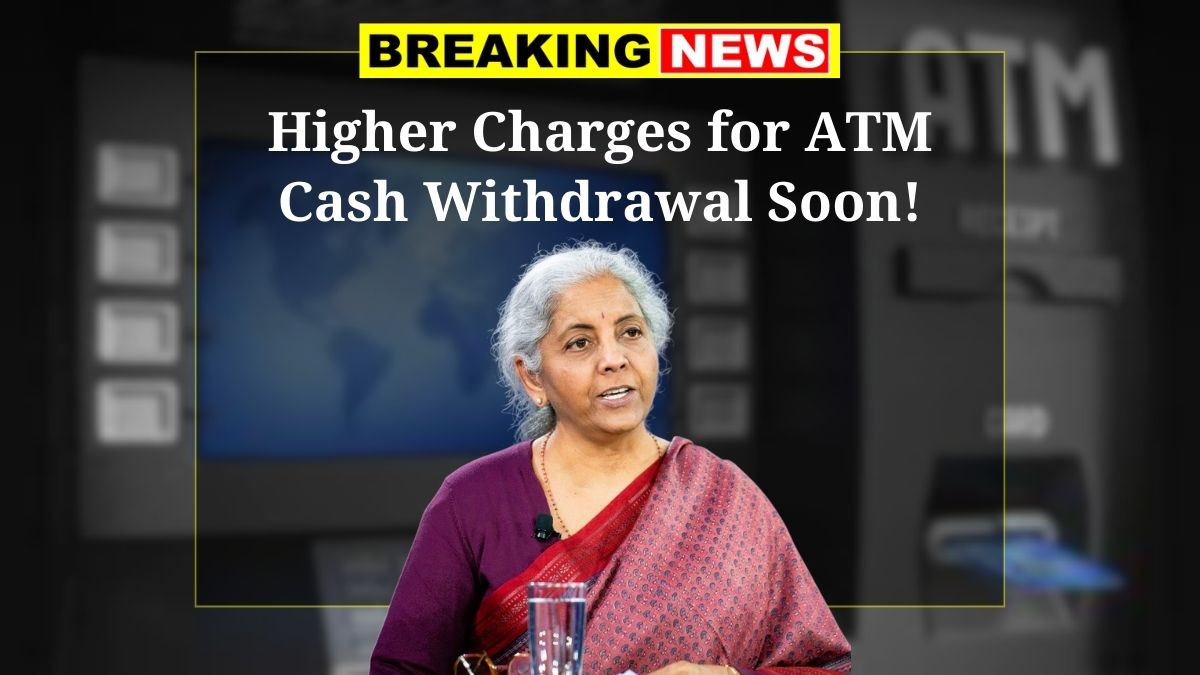ATM Charges Hike – Using ATMs is something most of us do regularly, but starting from May 31, 2025, withdrawing cash from ATMs might start to hit your pocket a little harder. The Reserve Bank of India (RBI) and banks have decided to implement new charges that could surprise many people who aren’t aware of these changes yet. In this article, we’ll break down what these new rules are, how much the charges have increased in different banks, and how you can manage these changes smartly.
Why Are ATM Charges Increasing?
The main reason behind these new charges is the rising costs of maintaining ATMs, including machine maintenance and ensuring security. Additionally, banks are pushing for a shift toward digital payments, which is why this change is being introduced. With these new fees, banks hope to encourage people to opt for digital transactions over cash withdrawals.
What’s Changing? Let’s Look at Bank-by-Bank Charges
Under the new rules, each bank has updated its ATM withdrawal limit and the charges that apply once you exceed that limit. Here’s a quick look at the changes in ATM charges across major banks:
| Bank Name | Free Transaction Limit | Charge After Limit | Other Fees (GST, etc.) |
|---|---|---|---|
| SBI | 5 transactions free | 25 INR per transaction | GST applies |
| HDFC Bank | 5 transactions free | 23 INR per transaction | GST applies |
| ICICI Bank | 3 transactions free (in metro areas) | 24 INR per transaction | GST applies |
| PNB | 5 transactions free | 21 INR per transaction | GST applies |
| Bank of Baroda | 5 transactions free | 20 INR per transaction | GST applies |
| Axis Bank | 4 transactions free | 25 INR per transaction | GST applies |
| Canara Bank | 5 transactions free | 20 INR per transaction | GST applies |
| Kotak Mahindra Bank | 3 transactions free (in metro areas) | 22 INR per transaction | GST applies |
Who Will Be Affected the Most?
The impact of these new charges will be felt the most by certain groups of people:
- Frequent Cash Users: People who withdraw cash regularly and exceed the free transaction limit.
- Rural Customers: People living in rural areas where ATM access is limited may feel the pinch because they have fewer options for free withdrawals.
- Seniors and Technologically Less Savvy People: Elderly individuals or those who are not comfortable with digital banking might find themselves facing higher fees.
- Small Business Owners: Small traders who often deal in cash transactions may see a rise in their overall withdrawal costs.
For example, my uncle is a pensioner who needs to withdraw money every week. In the past, he didn’t face much trouble with ATM charges, but with the new rules, he’ll likely end up paying an extra 100 to 150 INR each month because he exceeds the free withdrawal limit.
How Can You Avoid These Increased Charges?
To avoid paying extra fees for ATM withdrawals, consider these options:
- Use UPI and Digital Wallets: These methods are not only free but also provide the convenience of instant transactions.
- Withdraw Larger Amounts Less Frequently: Instead of withdrawing small amounts multiple times, plan to withdraw a larger sum at once to minimize your visits to the ATM.
- Use Debit or Credit Cards for Payments: For many transactions, you don’t need to withdraw cash. Paying directly via card can save you ATM charges.
- Use Online Banking for Fund Transfers: Services like NEFT, RTGS, and IMPS are available through banking apps and can be used to transfer funds quickly without needing to visit the ATM.
What Role Does the Government and RBI Play?
The RBI has given banks the authority to charge extra fees on ATM withdrawals once the free limit is exceeded. However, they also ensured that GST (Goods and Services Tax) would be applicable to these charges, and banks need to inform their customers about these changes. While the government and RBI have allowed the fee hikes, they are also promoting the use of digital payments as part of a broader strategy to reduce cash dependency.
Will These Changes Promote Digital Payments?
Absolutely. With more people shifting towards online and digital payments, these changes will encourage people to rely less on cash transactions. This trend is expected to become more prominent, especially in urban areas. As digital literacy increases, people will find it easier to embrace alternatives to cash, reducing the need for frequent ATM visits.
Tips for Managing Your Budget with These Changes
Here are some practical tips to manage your budget and avoid unnecessary ATM charges:
- Plan Your Cash Withdrawals: Try to withdraw cash at the beginning of the month or when you know you’ll need it. This can help you stay within your free transaction limit.
- Know Your Bank’s Free Limit: Keep track of your bank’s free transaction limit and ensure you don’t exceed it. Some banks even send SMS alerts to notify you once you’ve hit the limit.
- Monitor Your Transaction History: Keep an eye on your transactions and check for any extra charges. Being proactive can help you avoid surprises at the end of the month.
Starting from May 31, 2025, withdrawing cash from ATMs won’t be as cheap as before. If you’re not careful, you could end up paying an extra 100 to 200 INR every month in fees. However, by making smart choices, such as opting for digital payment methods and planning your withdrawals, you can avoid these additional charges.



